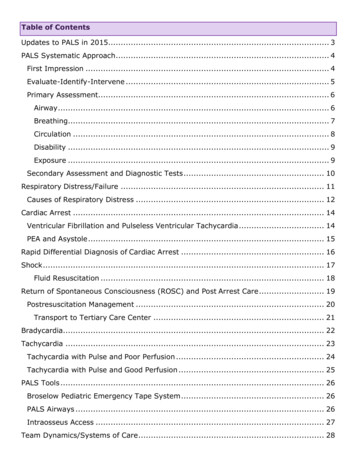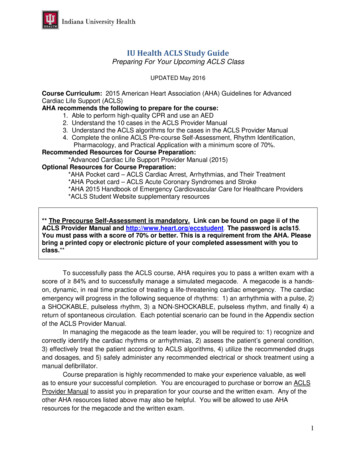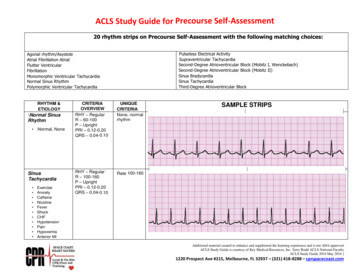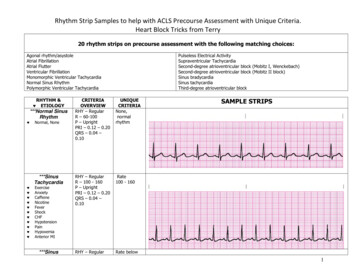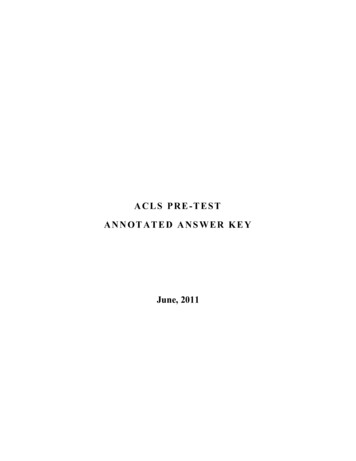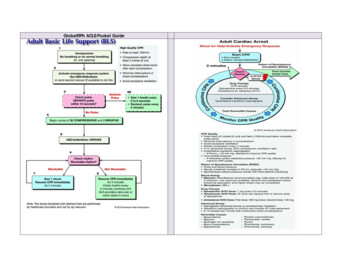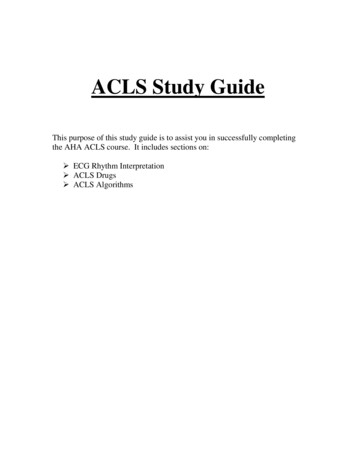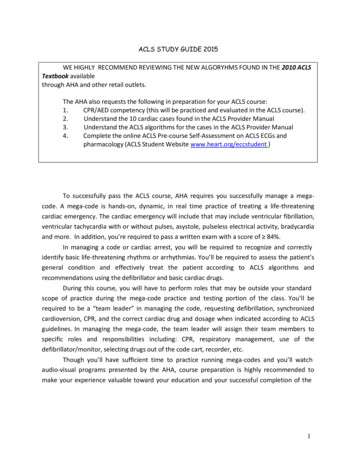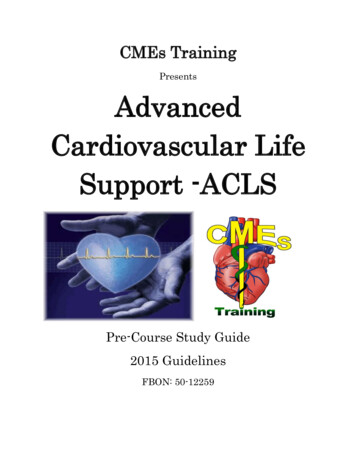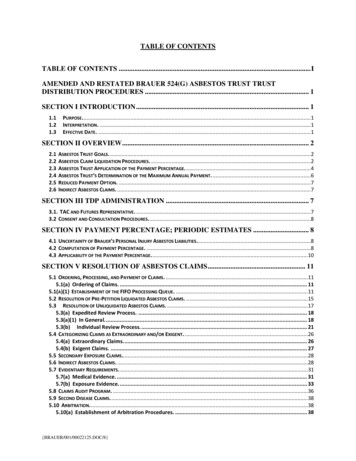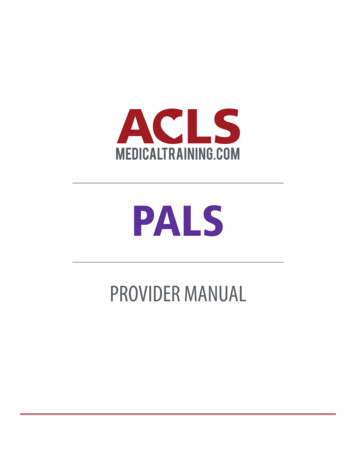
Transcription
CONTENTSList of Figures . 4List of Tables . 5Unit One: General Concepts . 6PALS Preparation. 6Organization of the PALS Course . 62015 pals guideline changes . 7Changes to Pediatric BLS in 2015 . 8Pediatric Chain of Survival . 8Unit Two: Pediatric Evaluation. 10Evaluate-Identify-Intervene . 11Evaluate the Child . 12Identify . 17Intervene . 17Unit Three: The Team in PALS . 18Unit Four: Recognition of Respiratory Distress/Failure . 19Hypoxemia . 19Hypercarbia . 20Signs of Respiratory Problems . 20Unit Five: Management of Pediatric Respiratory Distress or Failure . 21Upper Airway Obstruction Management. 21Lower Airway Obstruction Management . 22Lung Tissue Disease Management . 24Disordered Control of Breathing Management . 24Equipment for Respiratory Management . 25Pediatric Length Based Resuscitation Tape . 25Unit Six: Recognition of Pediatric Shock . 26Pathophysiology in Shock . 26Compensatory Mechanisms in Shock . 26Signs of Shock by Type . 27Unit Seven: Management of Pediatric Shock . 28Initial Management . 28Management of Shock by Type. 29Shock: Fluid and Medications . 29Intraosseus Access . 31Unit Eight: Recognition and Management of Pediatric Bradycardia . 32Signs and Symptoms of Bradycardia . 32Underlying Causes of Bradycardia . 32Bradycardia with a Pulse and Poor Perfusion Sequence . 33Unit Nine: Recognition and Management of Pediatric Tachycardia. 34Signs and Symptoms of Tachycardia . 34Initial Management of Tachycardia and Emergency Interventions . 35Tachycardia with Adequate Perfusion Sequence . 37Tachycardia with Poor Perfusion Sequence. 39Unit Ten: Recognition and Management of Pediatric Cardiac Arrest. 40Page 2 of 57
Cardiac Arrest Rhythms. 40BLS Components for Management of Cardiac Arrest . 40Advanced Life Support (ALS) in Cardiac Arrest . 41Pediatric Cardiac Arrest Sequence . 41Manual Defibrillation for VF or Pulseless VT. 43Special Circumstances . 43Unit Eleven: Pediatric Post-Resuscitation Support . 44DOPE . 45Maintenance Fluids . 45Management of Shock Following Successful Resuscitation. 46Patient Transport . 47Unit Twelve: Medications Used in PALS . 48Unit Thirteen: Rhythm Recognition . 53Sinus Rhythm . 53Sinus Bradycardia . 53Sinus Tachycardia . 54Sinus Rhythm with 1st Degree Heart Block . 542nd Degree AV Heart Block . 553rd Degree Heart Block . 55Supraventricular Tachycardia (SVT) . 56Atrial Fibrillation (AF) . 56Atrial Flutter . 56Asystole . 56Pulseless Electrical Activity . 57Ventricular Tachycardia (VT) . 57Ventricular Fibrillation (VF) . 57Page 3 of 57
LIST OF FIGURESFigure 1: Pediatric Chain of Survival . 8Figure 2: Pediatric BLS Algorithm. 9Figure 3: PALS Sequence . 10Figure 4: Evaluate-Identify-Intervene Sequence . 11Figure 5: Respiratory Distress to Cardiac Arrest . 19Figure 6: Upper Airway Obstruction Interventions. 21Figure 7: Lower Airway Obstruction Interventions . 22Figure 8: Classification of Asthma . 23Figure 9: Lung Tissue Disease Interventions . 24Figure 10: Disordered Control of Breathing Interventions . 24Figure 11: Example of a Weight Based System . 25Figure 12: Types of Shock . 29Figure 13: Intraosseous Acess in Tibia . 31Figure 14: Pediatric Bradycardia Sequence . 33Figure 15: Emergency Management of Tachycardia . 35Figure 16: Synchronized Cardioversion. 36Figure 17: Tachycardia with Perfusion and Normal QRS Sequence. 37Figure 18: Tachycardia with Perfusion and Wide QRS Sequence .
2015 PALS GUIDELINE CHANGES TABLE 1: COMPARISON OF PALS GUIDELINES Guideline Old Guideline 2015 Guideline Sequence CAB (compressions, airway, breathing) Confirmed in the 2015 guidelines Compression depth Used at least _ without a maximum depth Infants to children up to puberty: compress the chest up to 1/3 of the chest diameter; Puberty
